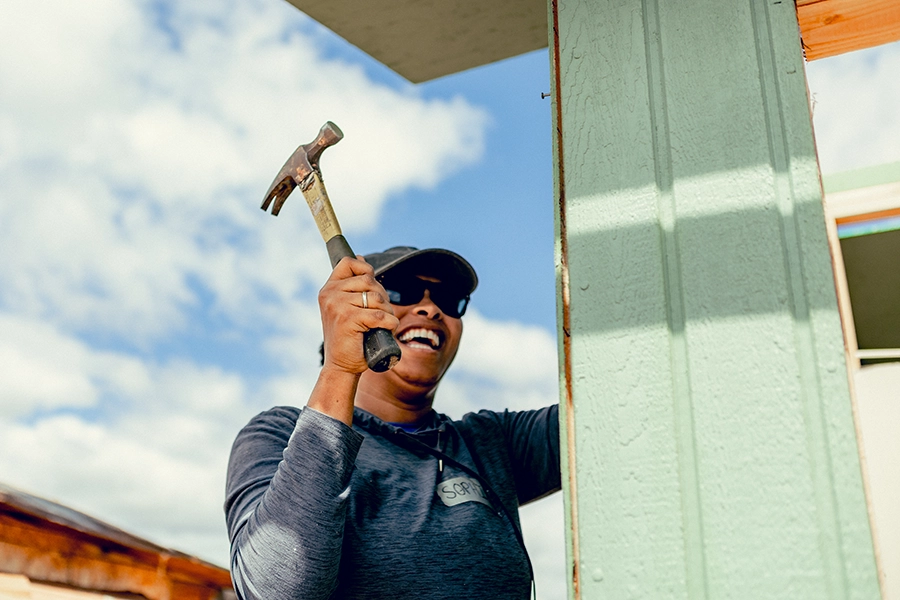Innovation does not happen by accident. The responsibility lies not just with recruiting brilliant minds, but with cultivating an environment where those minds feel valued, empowered, and safe to contribute. Learn more in our blog.

The Innovation Imperative
Innovation is no longer a luxury; it is a necessity. HR professionals, people leaders, and those shaping workplace culture hold the key to unlocking an organization’s true innovative potential. But what does it take to cultivate a breeding ground for groundbreaking ideas?
The answer lies not just in attracting intelligent minds, but in fostering an environment where those minds can thrive. Here’s how to transform your workplace from an idea graveyard to an innovation engine:
The Power of Growth Mindsets
- Stat: A study by Stanford University revealed that companies with a strong growth mindset culture outperform their peers by an average of 30%.
Embrace Challenges, Not Silos
- The Problem: Hierarchical structures can stifle communication and lead to the “echo chamber effect.”
- The Solution: Break down silos and encourage cross-functional collaboration. Think of meetings as dynamic idea exchanges, not status updates.
Lessons from the Skies: United Flight 173

The near catastrophe of United Flight 173 serves as a stark reminder of the importance of inclusive leadership. Authoritative styles can silence valuable insights.
The United Flight 173 incident stands as a sobering reminder of the critical importance of effective teamwork and communication in high-stakes environments. In December 1978, Flight 173, a United Airlines DC-8, faced an emergency when its landing gear failed to deploy properly.
As the crew worked to troubleshoot the issue, the captain focused extensively on resolving the mechanical problem, the fuel levels were dropping. According to reports, and owing to the hierarchical nature of command, the first officer and flight engineer were apprehensive in their communication of the dwindling fuel supply. The captain remained fixated on the landing gear issue, ultimately leading to the aircraft running out of fuel and crash-landing in a suburban area near Portland, Oregon.
While the incident resulted in tragic consequences, it served as a poignant lesson in the importance of open communication, shared decision-making, and effective leadership in aviation and beyond.
Incidents like this have also happened in the medical world when there have been instances where nurse practitioners haven’t spoken up in surgery assuming a surgeon has seen something they had inadvertently missed. In an environment where unhealthy fixed mindsets and authoritarian leadership are active, it will, at best, suffocate innovation.
Beyond the Buzzword: Moving from Ideas to Impact
Large companies often struggle with the paradox of having many ideas but little innovation. This is because brilliant minds need fertile ground to grow.
The Amazon Solution: Leaders Speak Last
Like it or not, a leader’s words carry weight, and how that weight is distributed can either crush a room or serve as a counterbalance to lift others higher. Amazon has found a way to support innovation by providing space for bias-free ideas sharing. In his book, The Amazon Way: 14 Leadership Principles Behind the World’s Most Disruptive Company, John Rossman describes how leaders step out of the way to open up the landscape of innovation.

Amazon’s approach to meetings reflects a commitment to fostering innovation and inclusivity within its organizational culture. Unlike traditional hierarchical structures where the most senior person typically leads discussions, at Amazon, the most senior individual often speaks last.
This strategic decision is rooted in the belief that by deferring input from senior leadership until the end of the meeting, the floor is open for diverse perspectives, and ideas will be heard without bias or undue influence. This practice encourages active participation from all team members regardless of their hierarchical status, and ensures that decisions are informed by a comprehensive understanding of the issues at hand.
By prioritizing the meritocracy of ideas over seniority, Amazon cultivates an environment where creativity thrives, and the best solutions emerge through collaborative dialogue and critical thinking.
The Key: Embrace the messiness of innovation. Don’t be afraid of dissenting voices. Remember, five similar ideas are essentially one!
Beyond Diversity: The Power of Cognitive Diversity and the 5:1 Ratio
5 good ideas from the same place, without any diversity of thought, is just one good idea.
To put it into perspective, it’s the old “How many non-diverse business leaders does it take to change a lightbulb?”

The room is dark, the light is out, and everyone is discussing the best way to get up there and swap out the bulb. They all agree that the room needs light and that the bulb needs to be changed. They spend hours calculating ladder heights, the light output of the new bulb, and what type of safety equipment is required…
Finally, it takes someone from outside of the echo chamber to point out that changing the lightbulb isn’t the issue, it’s that the power’s out, and that needs to be rectified first. It’s not a lightbulb issue. While everyone is scrambling to fix a perceived problem, it takes a diversity of thought to look beyond what is happening.
- The Stat: A study by McKinsey & Company found that companies with top-quartile diversity outperform their less diverse peers by 36% in profitability.
But here is the twist: Diversity is not just about race or gender. It is about fostering a culture that embraces a variety of perspectives, experiences, and thinking styles (cognitive diversity). This fuels creativity and innovation.
The Importance of Psychological Safety in Creating An Atmosphere for Innovation.
What we believe or perceive to be true directly correlates with the actions we take (or do not take). Psychological safety is the cornerstone of an innovative environment. When people feel safe to speak up, challenge assumptions, and take calculated risks creativity flourishes.
Psychological safety is critical for building a thriving work environment where employees feel empowered to contribute their best selves. By prioritizing this essential element, organizations can unlock a multitude of benefits, leading to success and achievement.
Statistically speaking:
- Project Aristotle, a study by Google, revealed that psychologically safe teams were:
- 17% more productive.
- 21% more likely to achieve their goals.
- 50% less likely to leave the company.
- A Harvard Business Review study on How Leaders Can Build Psychological Safety at Work found that employees who feel psychologically safe are:
- 3 times more creative.
- 8 times more likely to stay with their employer.
Psychological safety fosters a culture of:
- Open communication: When employees feel safe sharing ideas and concerns, information flows freely, leading to better decision-making.
- Calculated risk-taking: A psychologically safe environment allows employees to experiment and innovate without fear of punishment for failure.
- Collaboration: Trust and mutual respect pave the way for effective teamwork and knowledge sharing.
- Diverse perspectives: Employees feel valued for their unique contributions, fostering a richer pool of ideas.
- Problem-solving: People are comfortable challenging assumptions and proposing creative solutions.
By prioritizing psychological safety, organizations can cultivate a high-performing workforce that is engaged, satisfied, and more likely to achieve success.
The Wrap Up

Innovation does not happen by accident. The responsibility lies not just with recruiting brilliant minds, but with cultivating an environment where those minds feel valued, empowered, and safe to contribute. By dismantling hierarchies, fostering open communication, and championing cognitive diversity, you can unlock your organization’s true innovative potential.
Innovation is not about generating ideas in a vacuum; it is about creating the conditions where those ideas can flourish and transform your business.
The key takeaway for businesses is to prioritize psychological safety. When employees feel safe sharing ideas, challenging assumptions, and taking calculated risks, creativity flourishes. Studies show that psychologically safe teams are not only more productive and successful but also boast higher employee retention rates.
Here’s a simple action step: Implement practices that encourage open communication and diverse perspectives. This could involve adopting an “Amazon-style” meeting structure where leaders speak last or establishing clear guidelines for respectful communication that allows for dissent. By fostering psychological safety, you can unlock the true innovative potential of your workforce and drive business growth.
Let's Start a Conversation
TITUS INSIGHTS
Refreshing perspectives and practical expertise from the Titus team.
Committed To Radical Generosity
Our dedication to radical generosity keeps us focused on what matters most, and it allows us to make a trusted and lasting impact on the world around us. It’s the foundation of our culture and our partnerships.



